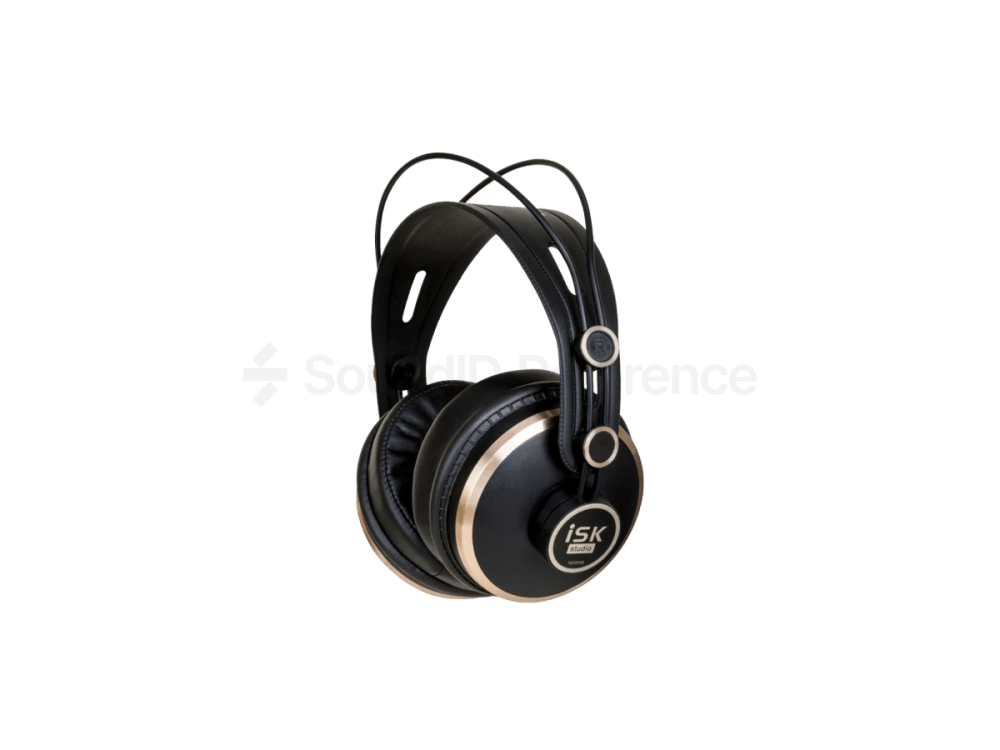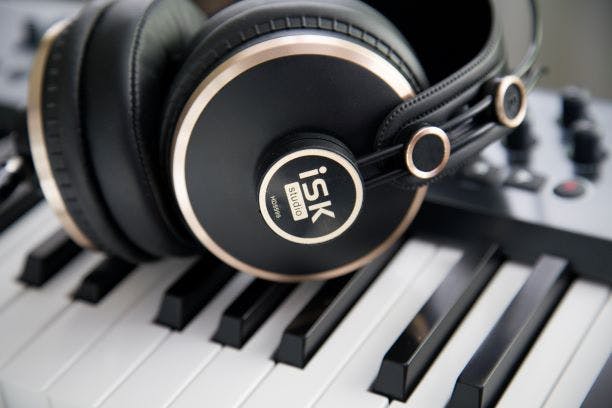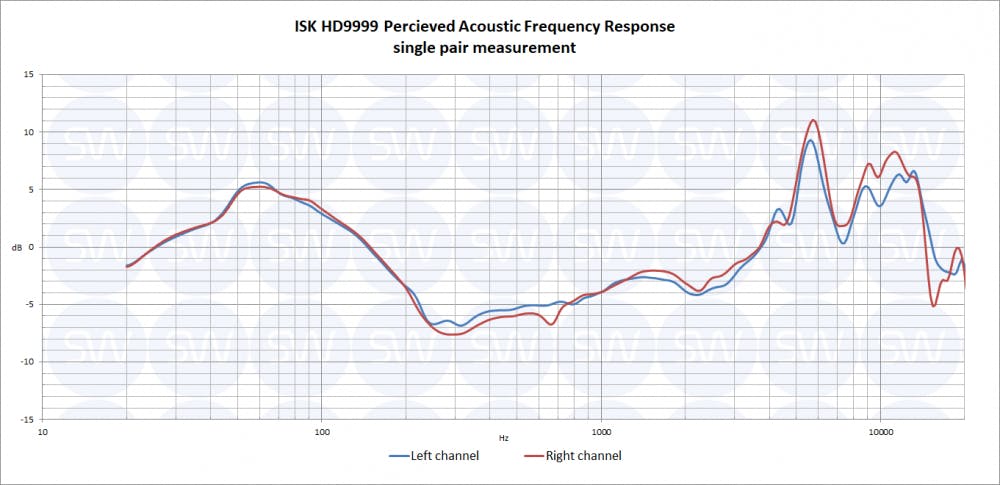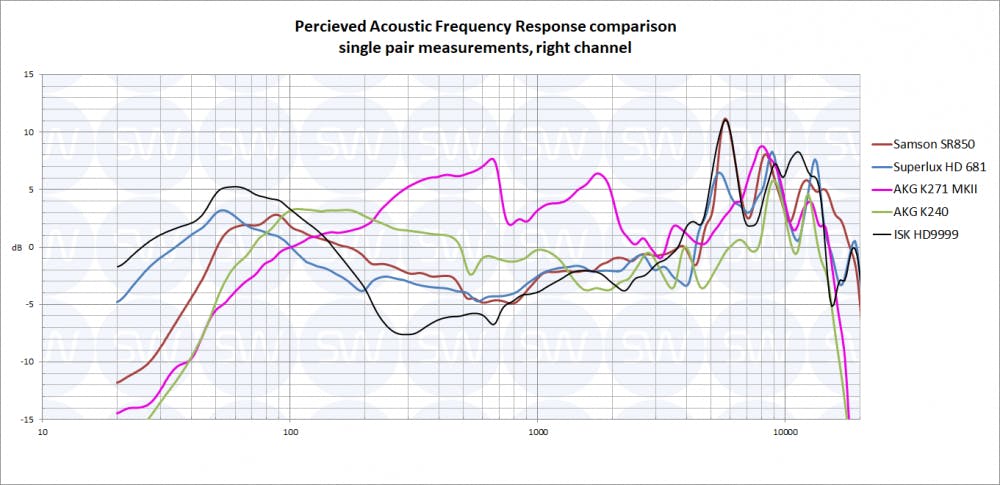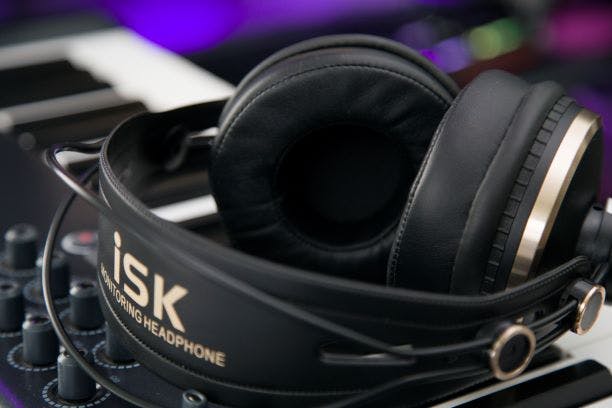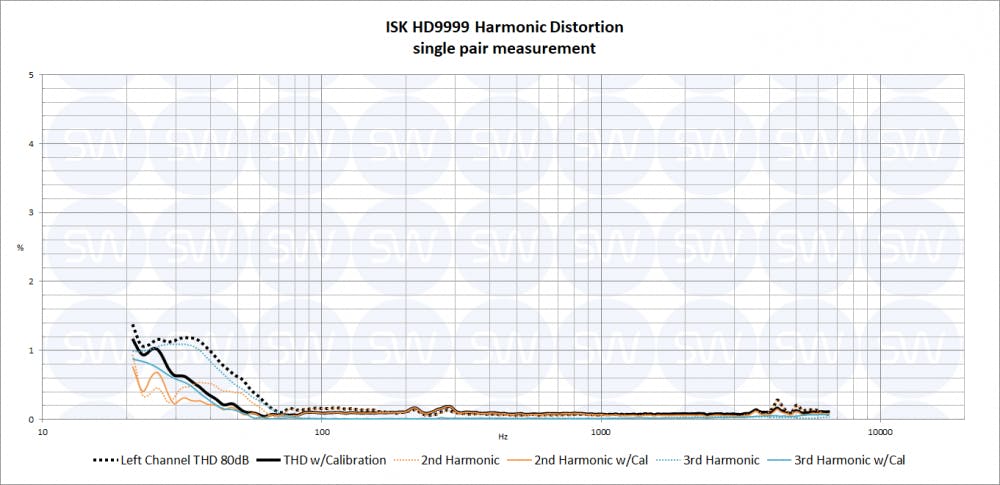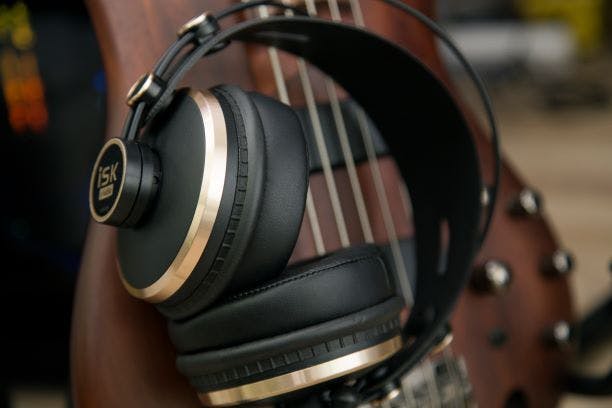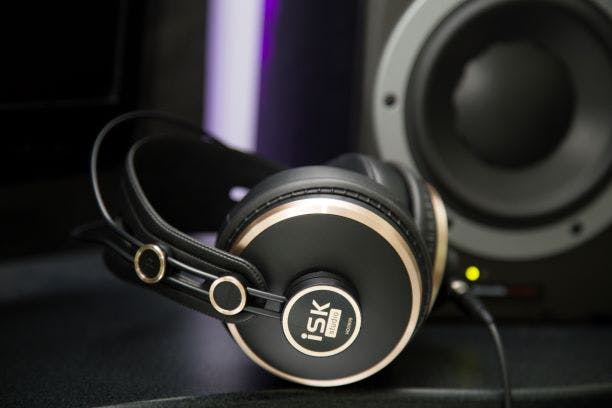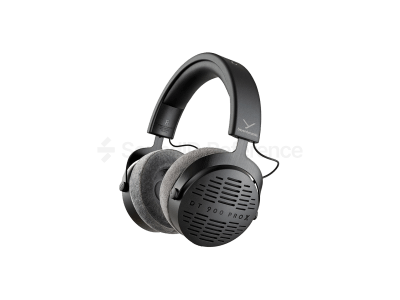ISK surely isn’t the only manufacturer borrowing the classic AKG design. While other options are significantly cheaper than the original, this costs about the same, yet comes with added goodies. How do HD9999 compare to other AKG influenced non-AKG headphones? Is the original always better?
- Great low end extension
- Good value
Pros list with SoundID Reference calibration
- Neutral frequency response
- Very scooped low-mids and boosted highs
Overall HD9999 feels very similar to AKG K240 and K271 MKII that these headphones “borrow inspiration” from. The headband and the two rail headband auto-adjust mechanism are virtually indistinguishable from AKG. Though ear pads are completely different – way more thick and soft, also the texture is more gentle. A second set of more thin and firm ear pads are also included. A detachable cable is always welcome and with these headphones you get two, both 3 meters long, one coiled and one straight.
As with most closed-back headphones, ISK HD9999 too boosts high frequencies and bass. The low end is accented by a moderate 5 dB gain at 60 Hz and the boost doesn’t extend too deep in low mids which makes the sound less muddy than some rivals, however, the 200 Hz to 1 kHz region is too muted which may lead to your mixes sounding muddy on other playback systems if you work with them uncalibrated. The low end extension is very good, the response falls below the 0 dB mark at extremely low 25 Hz. The curve overall is quite smooth, apart from the large spike at 6 kHz. This makes it relatively easy to accurately decode by ear how exactly these headphones color the sound.
Let’s look at how HD9999 stack up against other AKG copycats and original AKG.
While most of the non-AKGs improve the low end extension over original AKGs, HD9999 goes the lowest of them all. This does come at the expense of even more scooped low mids, however higher frequency response is very similar among all three copies. The fact that for HD9999 the calibration needs to attenuate bass, not boost as with the other ones, grants that there will be lower THD in the low end when using headphones calibrated. Noticeable difference presents itself when monitoring at very high levels of about 90 dB SPL with K271 MKII performing the worst. At moderate levels though, there’s almost no audible difference among all models.
Channel balance is fair. Among the pairs measured, stereo differences of meaningful bandwidth do not exceed 2 dB which is very good when compared against rivals. Channel balance shouldn’t cause any severe issues when working with HD9999.
The auto-adjusting headband ensures proper fit and makes sharing headphones among different people completely seamless. The thick ear pads that come installed on headphones out of the box are very nice, among the best in the price range. It’s not easy to find headphones under €100 that are suited for long work sessions, HD9999 is one of the best options in this category.
Price is pretty affordable to begin with, factor in the two sets of ear pads, two cables and a hard case and the deal seems even sweeter. There isn’t much competition that delivers comparable value for money, so high marks here!
While most of the THD consists of 3rd harmonic distortion, which usually is bad news, the overall THD is so low that it won’t cause any issues unless you’re monitoring at levels of 90 dB SPL or more. At such high volume, sub bass clarity will suffer, yet the artifacts are not overwhelming – they’re barely audible.
How accurate and consistent is the correction effect among different listeners?HD9999 delivers consistent perceived frequency response to most listeners and shouldn’t cause any “translation” arguments when shared among different people.
The manufacturing consistency is good, the measured differences among our sample pool were relatively low, falling below 2 dB, with few very narrow frequency band resonances being larger in magnitude. In this regard, they’re beating the competition.
Rating
Conclusion
ISK’s take on AKG headphones in many ways improves upon the original with the increased high frequency boost being the only drawback. If you’re using them calibrated though, the highs are nicely evened out so it’s no issue. With the more comfortable ear pads and two included cables, it also beats all of the other AKG lookalikes we’ve tested. If you got about €100 to spend on studio headphones, HD9999 should be on top of your shortlist.
Final Rating
Calibration Enabled
Calibration
